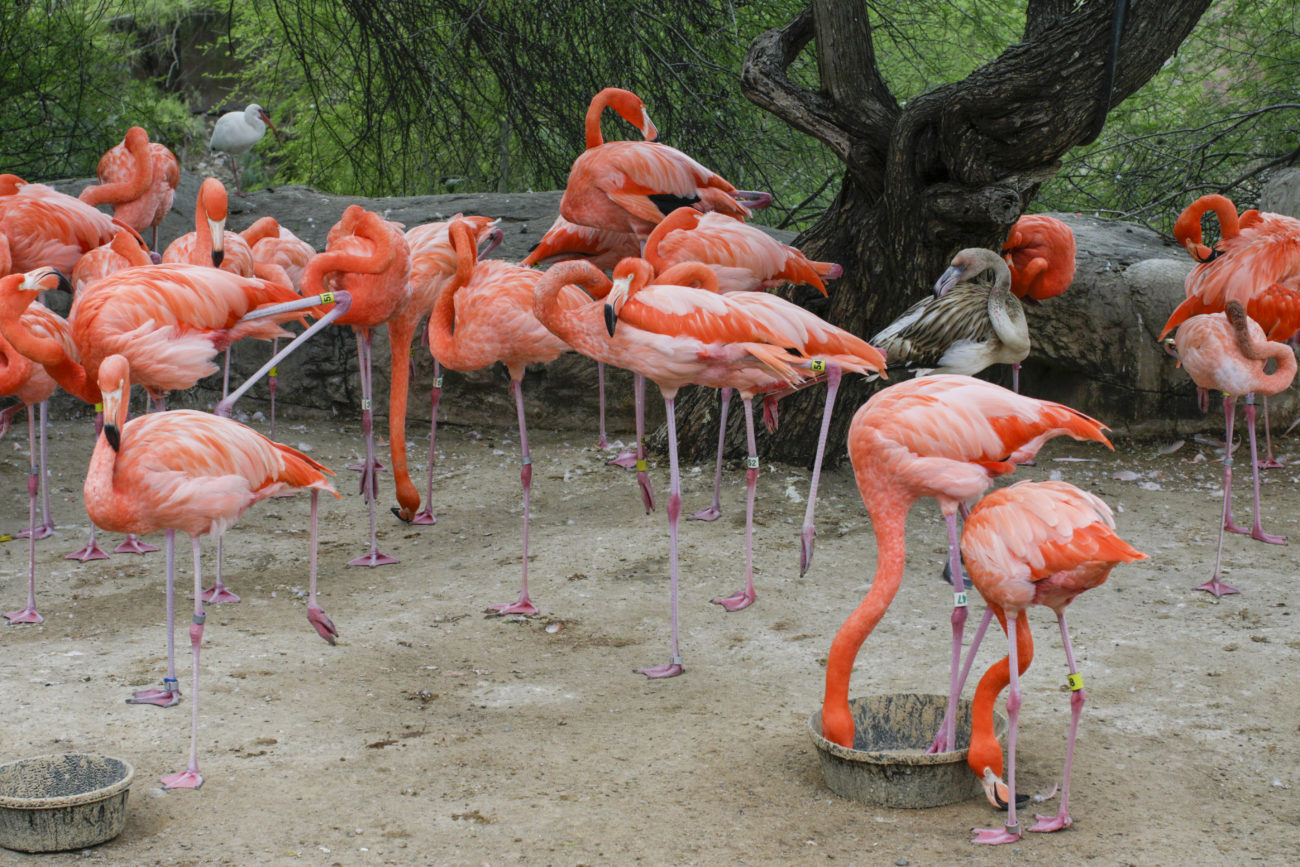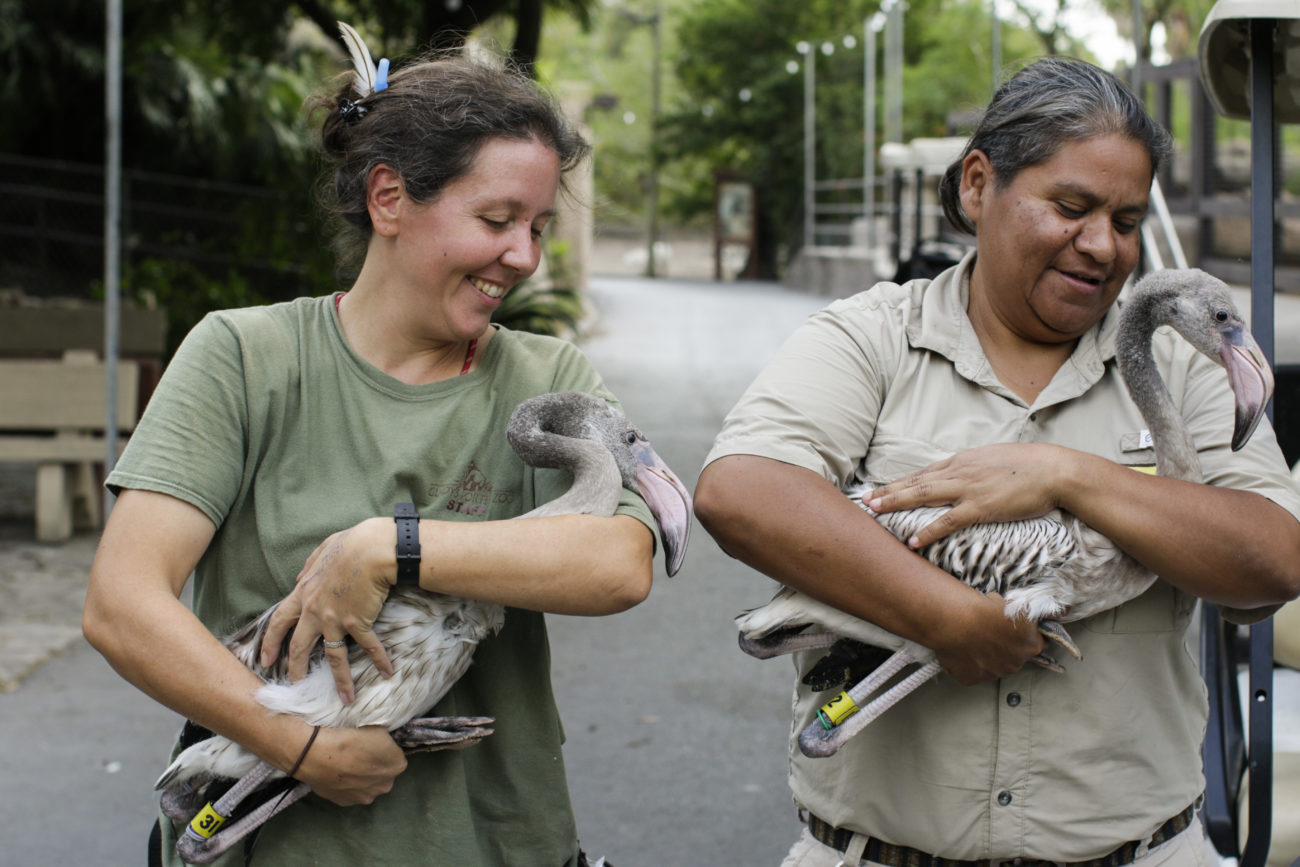Ten baby American Pink Flamingos have joined the flock at the Gladys Porter Zoo, the largest addition in recent years and easy to identify.
Like all babies they are adorable. They are also grey. The ones with touches of pink starting to show up in their feathers have been with the flock near the zoo entrance the longest, but all of the chicks are three to four months old, said Natalie Lindholm, assistant curator of birds at the zoo.
On Tuesday Lindholm and two other flamingo handlers brought over the last three young birds from an off-exhibit area where they were being readied to join the flock.
As they arrived, a bird known to handlers as “blue green” began pecking playfully at other chicks and its handlers.
“Blue green likes to own the show,” primary flamingo keeper Amy Beale said. The bird is known as blue green because the zoo hasn’t yet sent blood samples from the babies to the lab, which will determine the sex of each and other information. Bands of the birds’ legs identify them.
Lindholm said it takes about 2½ months to raise the babies from the time they hatch out of their eggs until the first ones are ready to be brought to the exhibit area.
The birds lay their eggs in the exhibit area, building up their nests out of mud until there is a platform on which to lay the eggs. The handlers watch the eggs carefully once they’re laid so they can take them to an incubator before there are any casualties.
The main danger is great blue herons who would love to swoop in and steal a meal, she said.
The incubator then “candles” the eggs, turning them periodically like their parents would. After about 28 days the baby birds start to “pip” the shell, making a small opening that gradually grows. It takes them a day or two to hatch out, Lindholm said.
Last year only three flamingo eggs hatched. This year the birds laid about 30 eggs, 10 of which were fertile.
The birds lay their eggs and share parental duties, “but we can’t let the parents raise their own offspring because of predators. The safest thing is for us to hand raise them,” she said.
Once they’ve hatched the chicks are taken to an off-exhibit area where they learn how to get along with other birds and begin to eat solid food. By the time they get to the exhibit area the chicks are about the same size as the adult birds.
Lindholm said the handlers start with a five-pound block of frozen shrimp, add fish and mix it up in a blender to make a high-protein flamingo shake. Later they feed “flamingo chow” from Purina.
It is the shrimp in their food that causes the flamingos to turn pink. Lindholm said the flamingos near the zoo entrance are American or Caribbean and coral-pink in color. A flock of Chilean flamingos on the other side of the resaca is more of a light pink. They come from a high Andean plateau, she said.
Beale said the main rule for observing the flamingos is not to touch. Since they were raised by humans they associate people with food.
She also said the world population of flamingos has tripled since the 1950s mainly because of zoos.
The flamingos get along well with other birds. Black-bellied whistler ducks and common Moore hens often come into the flamingo area.
“They all coexist quite happily. The flamingos do everything together as a close family,” she said.









